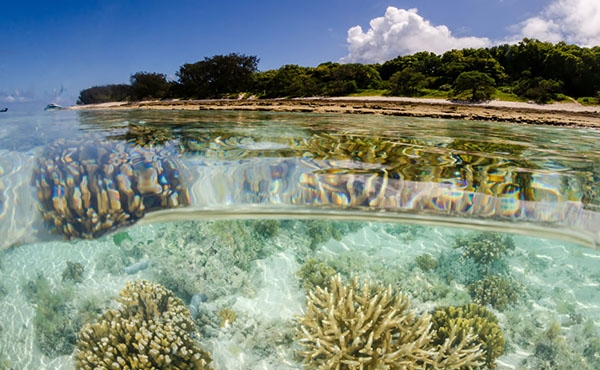The freshwater wetland coastal ecosystem includes lacustrine wetlands (lakes) and palustrine wetlands (billabongs, swamps, bogs, springs and soaks), which can be seasonal or hold water year-round. Freshwater wetlands can include rivers, but they are excluded for the purpose of this report. Freshwater wetlands are an important part of the landscape. They provide habitat and breeding areas for a wide variety of species, as well as connection between terrestrial, freshwater and marine ecosystems.593,938,945 Wetlands are highly productive ecosystems that store carbon, nitrogen and phosphorus, and remove nitrogen to the atmosphere (denitrification), all processes that benefit Reef health.946,947,948,949
Sediment trapping and nutrient removal by wetlands support healthy inshore habitats
Assessments of the extents of lacustrine and palustrine wetlands have not been updated since 2019, when approximately 70 per cent of the pre-clearing extent of these habitats remained in the Catchment. The overall condition of freshwater floodplain wetlands in the Catchment area has improved between 2016 and 2022, and they are overall in a good state.950,951 In the 2021–22 Reef Water Quality Report Card local physical integrity and connectivity of wetlands are reported to be in moderate state, while biotic integrity and local hydrology of freshwater wetlands are generally in good state.950,951 On a regional scale, all natural resource management catchments that have regional reporting available are considered to be in a moderate state.
Freshwater floodplain wetlands are under moderate pressure overall from catchment land use, but no change in overall pressure has been detected at a Catchment scale since 2016.950,951 Pressure from pollutant inputs is lower than pressure from pest species, loss of native vegetation and changes to water flow patterns, which are each exerting moderate pressure on wetland condition overall. This varies regionally, and the Wet Tropics and Fitzroy regions are considered under more pressure than the Burdekin and Burnett Mary regions. Other threats and pressures on freshwater wetlands include increasing temperatures and changing salinity.952 The removal of bund walls has been shown to be effective in restoring ecological processes in weed-infested grazing areas.938
Overall, the state of freshwater wetlands has not changed significantly since 2019. Pest introductions, habitat modification, water regime changes and pollutant inputs have affected wetlands in some locations within the Catchment.


